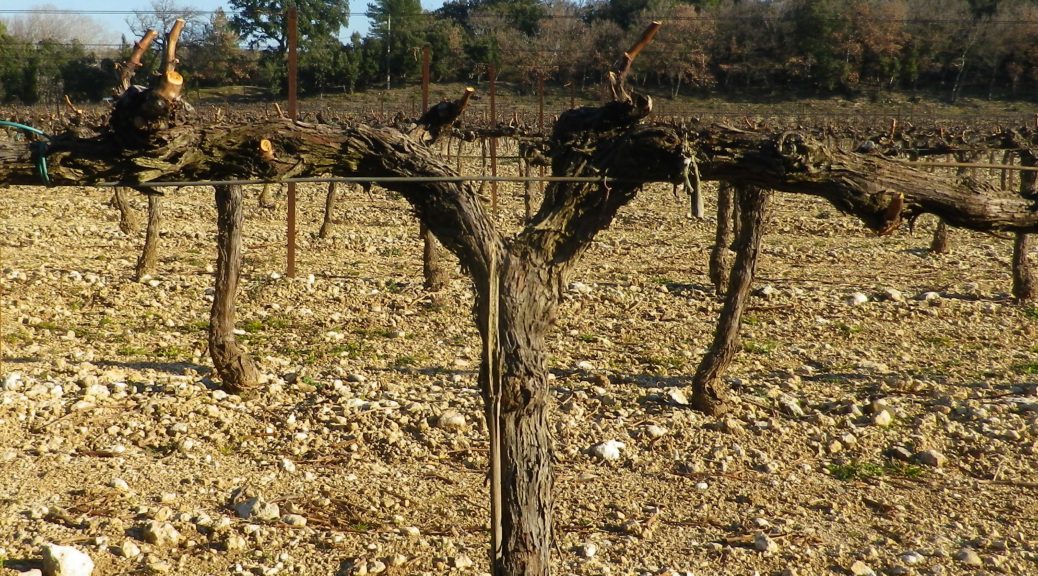What I Learned
The Rhone River drains much of central and south -eastern France. Along the Rhone, starting just south of Lyon and ending a bit south of Avignon, there are many wine appellations along or near the river. Therefore, the Cotes du Rhone wine appellation, such a large area, is of necessity, divided into the northern Rhone (Rhone Septentrional) and southern Rhone (Rhone Meridional) zones.
This post focuses on the northernmost appellation of the southern Rhone zone. This is where, when driving south along the highway, through Valence, you note that northern France is now definitively in the rear-view mirror, and southern France has begun. It is where the department of the Drome meets Provence’s department of the Vaucluse.
It is an area that is overwhelmingly agricultural, with a triad of Mediterranean crops: Lavender, olives, and of course, grapes. Viticulture has a pre-classical history here, as the vine was introduced not by the Romans, as is so often the case in regions north or west of the Alps, but by the Phoenicians, some 500 years BCE.
It is an area where continental weather patterns meet Mediterranean ones. It also has a variety in soils: sand, and gravel and the famous galet (round river stones, especially well-known in the nearby Chateauneuf du Pape). Over hundreds of thousands of years, a variety of geologic forces, from glacial to alluvial, have influenced this land. Therefore, combined with all the other differences mentioned previously, the wines of this appellation likewise show a great variety.
The name of this appellation? Formerly, it was called Coteaux du Tricastin. But due to the negative associations arising from the nearby Tricastin Nuclear Power Plant incident in July 2008, the vintners in this area applied to change the appellation name. Hence in late 2010, the wine district forming a triangle from the impressive Grignan in the east, to Saint Paul Trois Chateaux and Montelimar in the west, became known as Grignan les Adhemar.
Within this roughly defined area, only some 20 or so communes produce wine for this appellation. Some of these communes lie close to the Rhone, or the canal, laid out along one of its old riverbeds. Others lie close to the first foothills of the southern Alps. The differences in proximity to the river, or elevation, ultimately create yet more diversity in the resulting wines.
This appellation has less than 50 wine makers (domaines or cooperatives), and produces only about 8 million bottles of wine per year per year. Therefore, if you are lucky enough to find a bottle, enjoy it while you can!
What I Tasted
2017 Cuvee Laurine Blanc; Appellation Grignan Les Adhemar Controlee, Domaine Saint Luc (La Baume de Transit): A dry white wine cuvee (Viognier and Bourboulenc) with pale plus gold color; floral and ripe white stone fruit nose, with flavors of the same; Medium acidity.
2017 Les Grands Plans, Appellation Grignan Les Adhemar Protegee, Domaine du Serre des Vignes (Roche St Secret Beconne): A dry red wine cuvee (60% Grenache, 40% Syrah) with medium plus garnet color; an herbaceous and slightly spicy nose, with spice oak and slight floral flavors; High minus tannins.
2017 Secrets du Terroir, Appellation Grignan Les Adhemar Controlee, Domaine de Montine (Grignan): A dry red wine cuvee (50% each Syrah and Grenache) with medium garnet color; neutral nose, with slight spice and red berry flavors, medium plus tannins.
2015 Vieilles Vignes, Appellation Grignan Les Adhemar Controlee, Domaine de Grangeneuve (Roussas): A dry red wine cuvee (Grenache and Syrah) with dark minus garnet color; a nose of tobacco and white flowers, with dark chocolate, dried cherry and floral flavors; High minus tannins.
2014 La Grangette Blanche, Appellation Grignan Les Adhemar Controlee, Château Bizard (Allan): A dry white wine cuvee (75% Grenache Blanche, 25% Viognier) with medium minus gold color; a slight mineral and spice nose, with spice, floral and mineral flavors; Medium minus acidity.
